人教版(2019)必修二Unit4 History and traditions Reading and Thinking课件(38张PPT)
文档属性
| 名称 | 人教版(2019)必修二Unit4 History and traditions Reading and Thinking课件(38张PPT) | 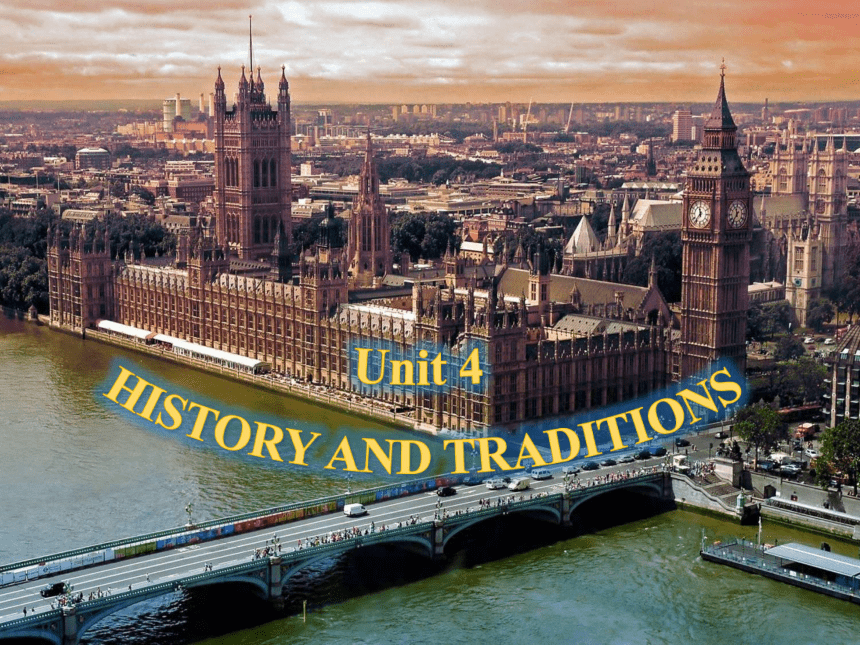 | |
| 格式 | pptx | ||
| 文件大小 | 15.4MB | ||
| 资源类型 | 教案 | ||
| 版本资源 | 人教版(2019) | ||
| 科目 | 英语 | ||
| 更新时间 | 2020-12-24 12:45:24 | ||
图片预览

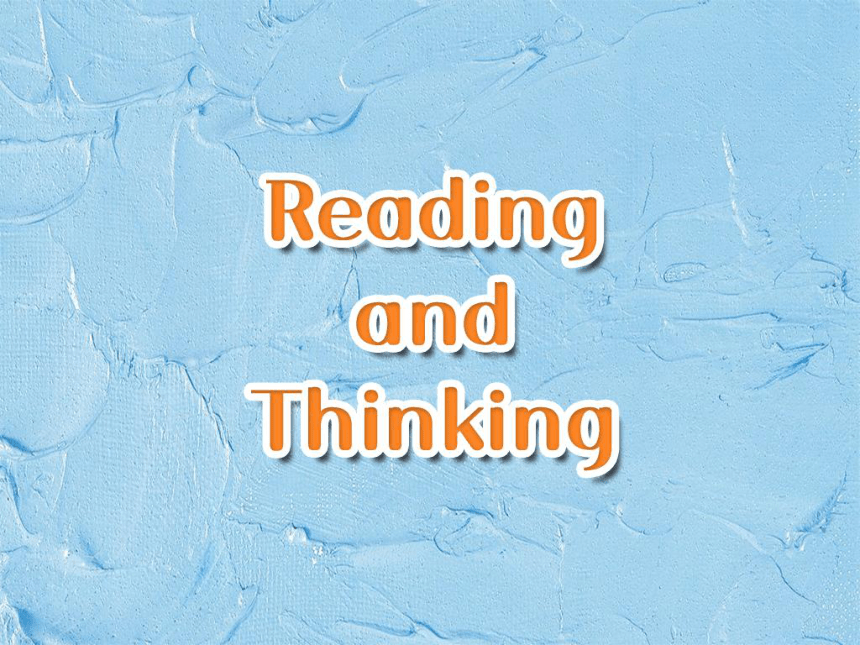
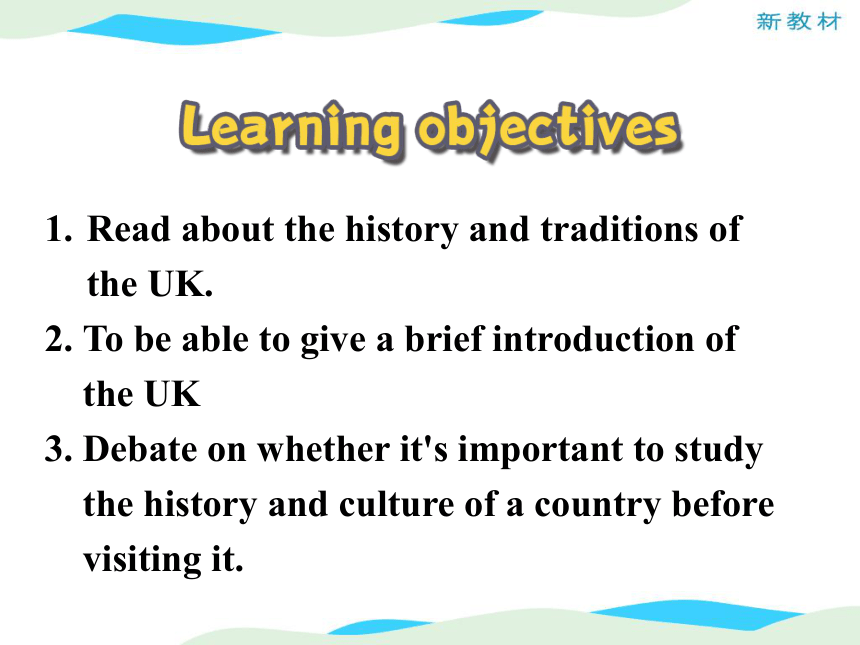
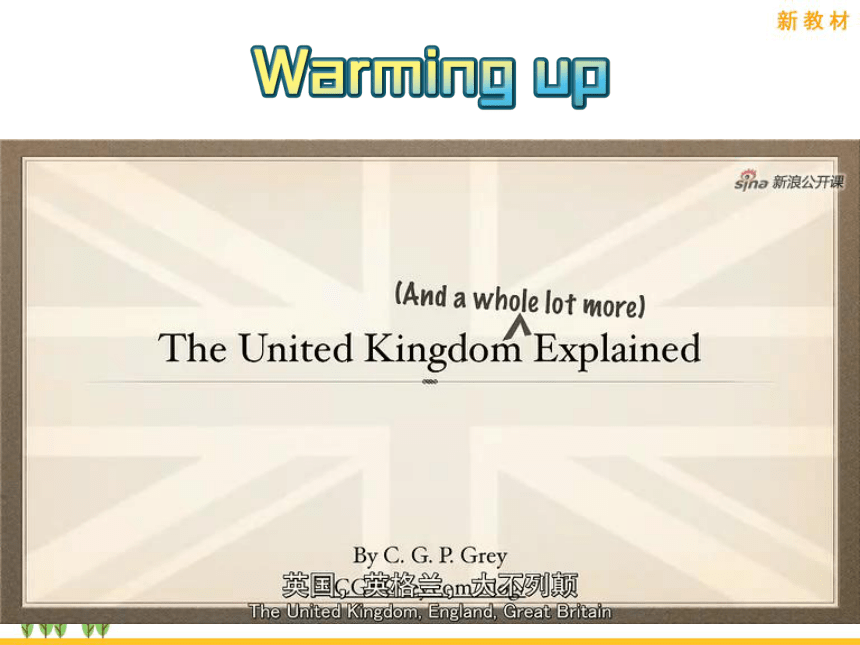
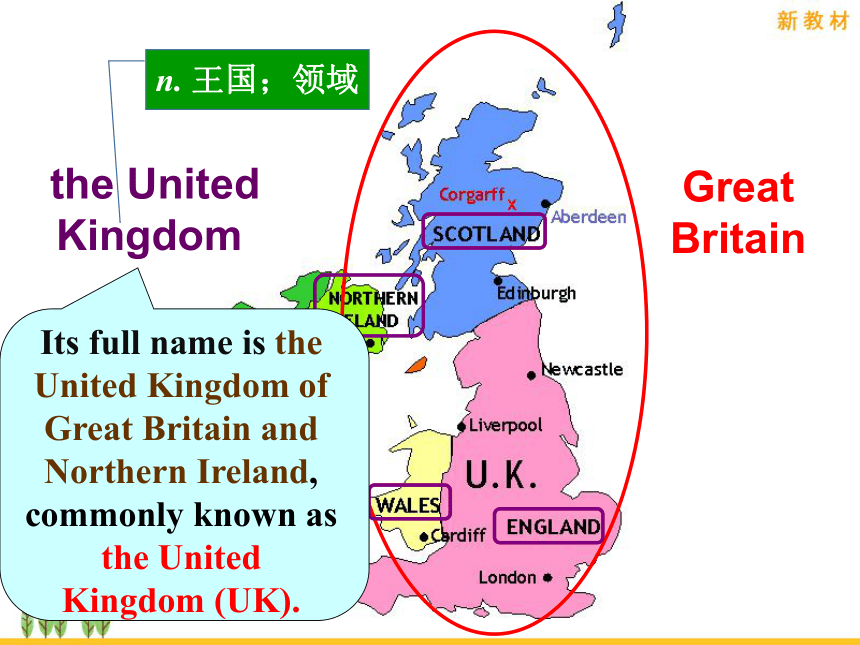
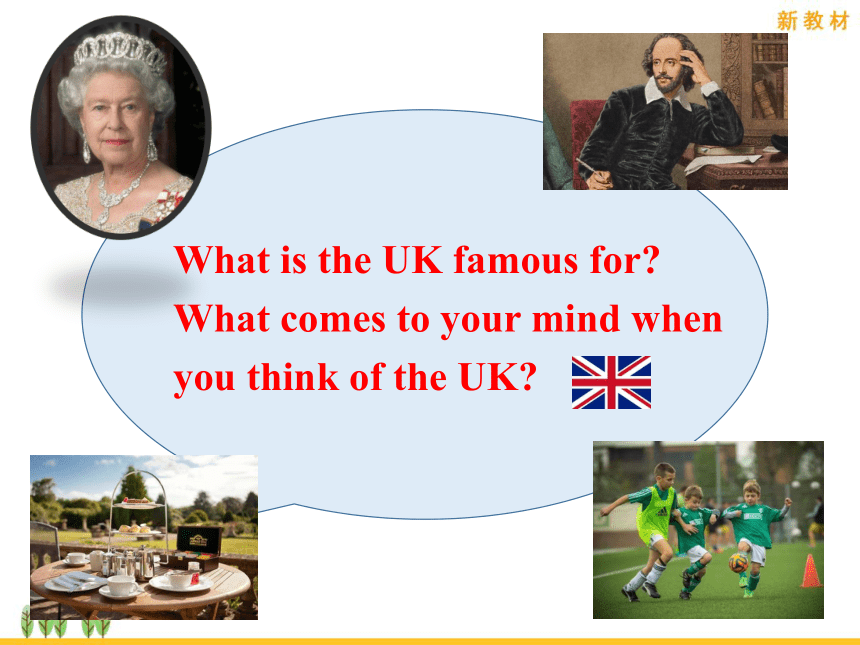
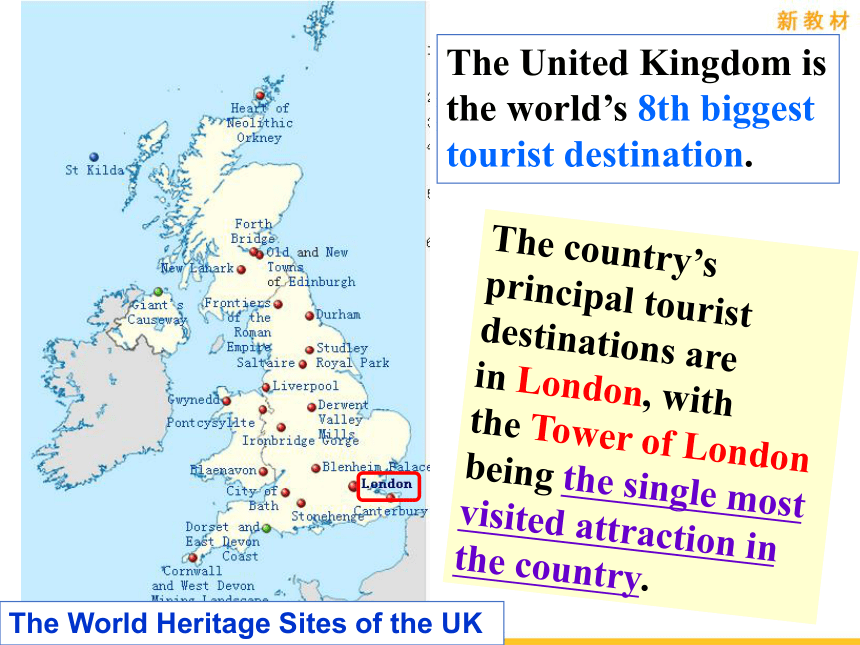
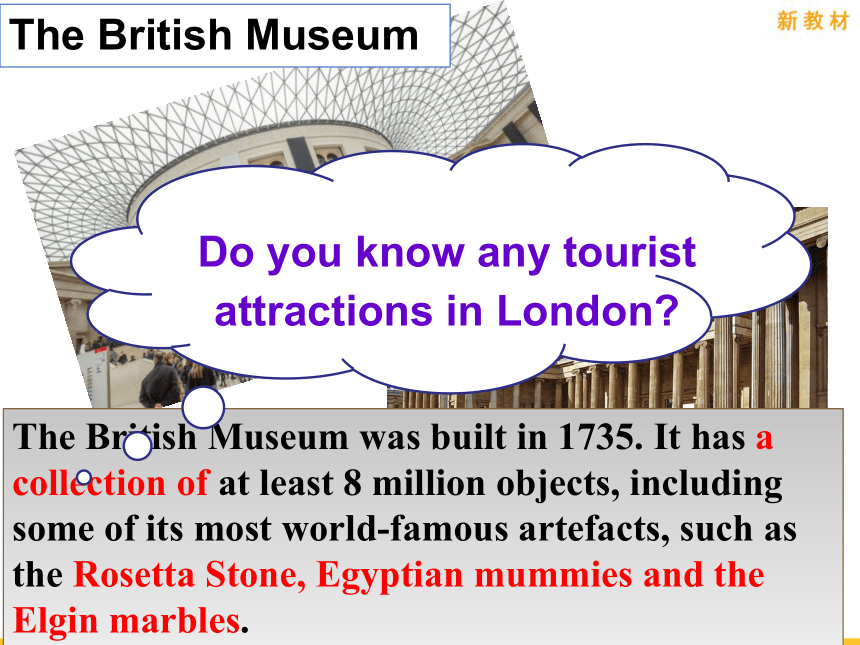
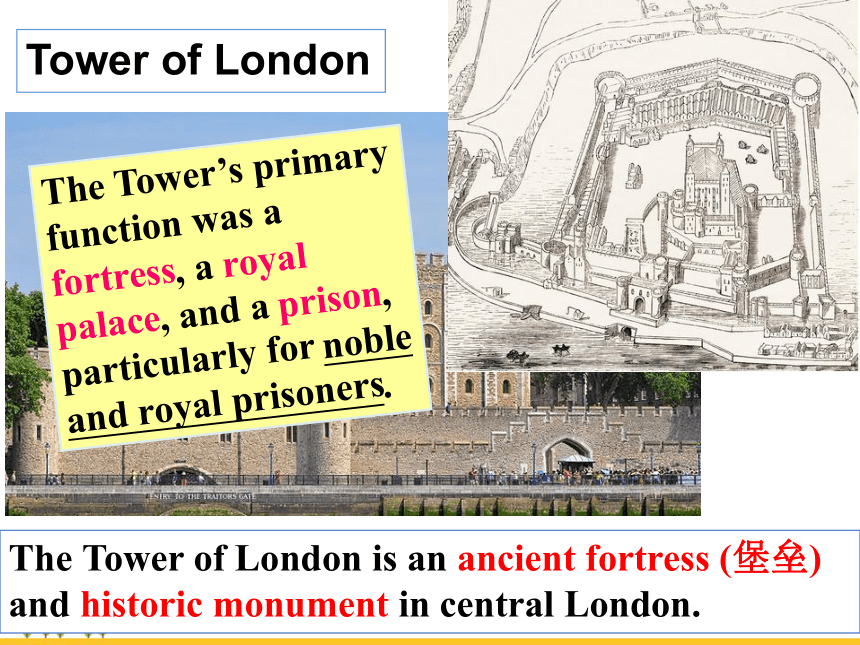
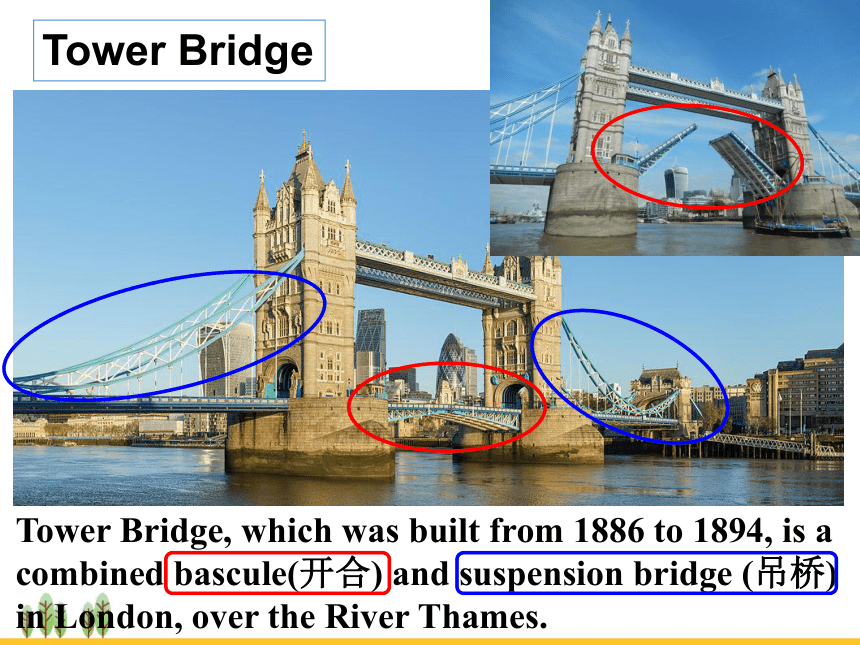
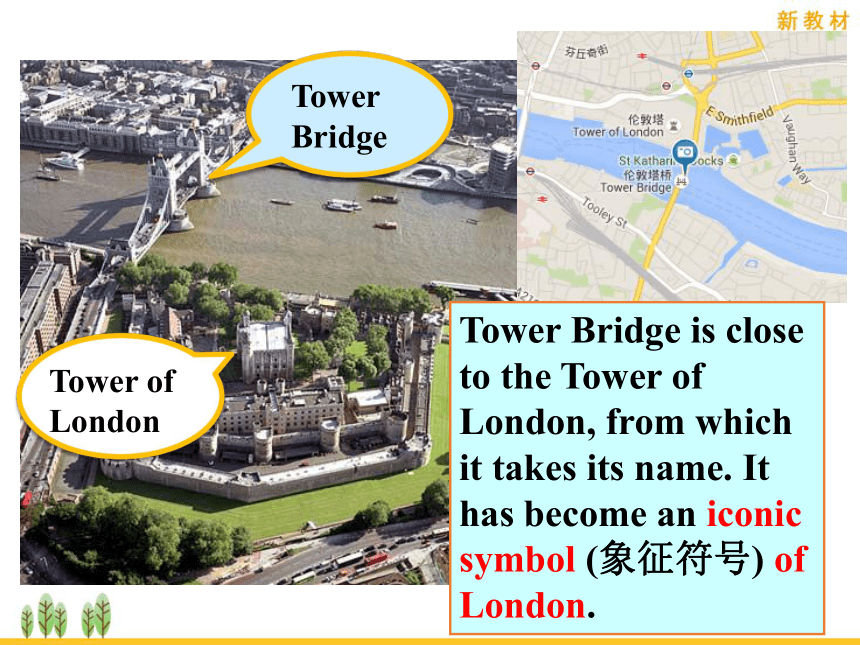
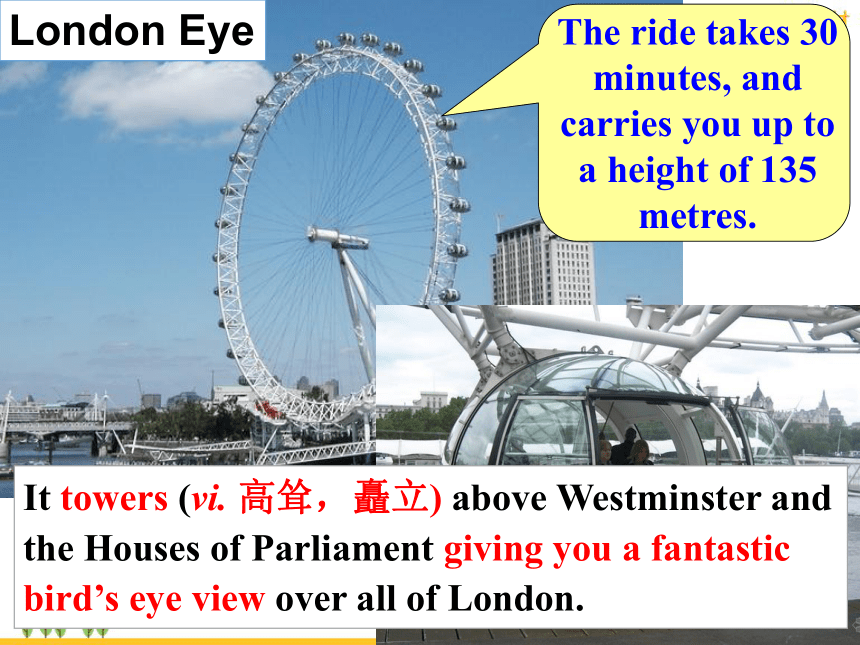
文档简介
Unit 4
HISTORY AND TRADITIONS
Read about the history and traditions of the UK.
2. To be able to give a brief introduction of
the UK
3. Debate on whether it's important to study
the history and culture of a country before
visiting it.
Great Britain
the United Kingdom
Its full name is the United Kingdom of Great Britain and Northern Ireland, commonly known as the?United Kingdom?(UK).
n. 王国;领域
What is the UK famous for?
What comes to your mind when you think of the UK?
The country’s principal tourist destinations are in?London, with the?Tower of London being the single most visited attraction in the country.
The World Heritage Sites of the UK
The?United Kingdom?is the world’s?8th biggest tourist destination.
The British Museum was built in 1735. It has a collection of at least?8 million objects, including some of its most world-famous artefacts, such as the Rosetta Stone, Egyptian mummies and the Elgin marbles.
The British Museum
Do you know any tourist attractions in London?
Tower of London
The?Tower of London?is an ancient fortress (堡垒) and historic monument in central London.?
The Tower’s primary function was a fortress, a royal palace, and a?prison, particularly for noble and royal prisoners.
Tower Bridge
Tower Bridge, which was built from 1886 to 1894, is a combined bascule(开合) and suspension bridge (吊桥) in London, over the River Thames.
Tower Bridge
Tower of London
Tower Bridge is close to the Tower of London, from which it takes its name. It has become an iconic symbol (象征符号) of London.
It towers (vi. 高耸,矗立) above Westminster and the Houses of Parliament giving you a fantastic bird’s eye view over all of London.
London Eye
The ride takes 30 minutes, and carries you up to a height of 135 metres.
some other tourist attractions
Big Ben
Buckingham Palace
St Paul's Cathedral
National Gallery
Windsor?Castle
Hyde Park
Look at the map, can you tell me what type of map it is?
It is an administrative zoning map.
What do the different symbols (e.g. icons, circles, spots) and colours stand for?
the small circles stand for big cities
the red sport stands for the capital
different colours stand for different regions or countries
Pre-reading
Look at the map and discuss in pairs:
What does the map show?
What is it used for?
When you look at a map, think first about what it shows and what the map shows and what the symbols mean.
What does the map show? What is it used for?
The map shows the British Isles, the islands which make up the Great Britain (England, Scotland, and Wales) and Ireland (Ireland and Northern Ireland).
It is used to show the four different countries that make up the UK and some of the major cities.
What message can you get from the title?
What might “a name” here refer to?
What do you expect to read in the passage?
What is the main idea of the text?
A brief introduction to the UK about its foundation and development based on geography, history and culture, etc.
Match each part of the text with its main idea.
1. Part 1 (Para. 1)
?
A. Origins of the names
2. Part 2 (Para. 2)
?
B. Advantages of
studying the history of
the?UK
3. Part 3 (Para. 3)
?
C. Comparison of the
four countries of
the?UK
4. Part 4 (Paras. 4-5)
?
D. Introduction of the
topic.
1. What are the four countries of the United Kingdom? Which two were the first to be joined together?
The four countries of the United Kingdom are England, Wales, Scotland and Northern Ireland.
England and Wales were the first two to be joined together.
Read the text and answer the questions.
2. According to the text, what are two chief
advantages of studying the history of a
country?
The two chief advantages of studying the history of a country are to help you understand more about the country and its traditions and to make visiting it more enjoyable.
adj. 最重要的;最高级别的
Read again to complete the timeline:
20th century
11th century
16th century
18th century
19th century
Romans arrived
Anglo-Saxons came
Vikings came
1st century
5th century
8th century
Normans came
Wales was joined
Scotland was joined
Ireland was added
Southern Ireland broke away
Sort out the information according to the timeline.
{5C22544A-7EE6-4342-B048-85BDC9FD1C3A}When
What happened?
What changed?
Romans arrived
Anglo-Saxons came
Vikings came
1th century
5th century
8th century
towns and roads
language and way houses were built
vocabulary and names of locations across the UK
{5C22544A-7EE6-4342-B048-85BDC9FD1C3A}When
What happened?
What changed?
11th century
16th century
18th century
Normans conquered England after the Battle of Hastings
castles built, legal system changed, and new words from French introduced
Wales was joined to Kingdom of England
Scotland was joined to England and Wales
“Kingdom of Great Britain formed/created”
vt. 占领;征服;控制
{5C22544A-7EE6-4342-B048-85BDC9FD1C3A}When
What happened?
What changed?
19th century
20th century
Ireland was added
the southern part of Ireland broke away
“United Kingdom of Great Britain and Ireland formed/created”
name changed to “United Kingdom of Great Britain and Northern Ireland”
Read?the text carefully and find the same and different areas of the four countries of the?UK.
The four countries
The same areas
The different areas
England
Wales
Scotland
Northern Ireland
? The same flag —the?Union?Jack
? The same 1. _______________
? The same 2. _______________
? Education system
? 3. ______________
??Traditions: 4. ____________ and national dish
? Football team
currency
military defence
Legal system
national day
n. 通货;货币
n. 军事的;军用的
n. 防御;保卫
n. 法律的;合法的
A: I can never remember what the UK means! There’s England, Britain, ___________ Great Britain!
B: Well, it helps if you remember that there are four countries that __________ the UK. That’s why it’s called the United Kingdom.
Complete the conversation about the UK using the phrases in their correct forms.
as well as belong to add to join to break away keep your eyes open
as well as
belong to
A: Four countries? I must have been asleep in that part of our history class! So the first country was England, and the others were ___________that?
B: Yes, right. First England, then Wales, then Scotland. The last country was Ireland, but later the southern half didn't want to be ___________the United Kingdom.
joined to
added to
as well as belong to add to join to break away keep your eyes open
A: Oh, I remember now! The southern part ______________ from Northern Ireland, right?
B: Yes, you got it well remembered! But ___________________ in history class next time!
as well as belong to add to join to break away keep your eyes open
broke away
keep your eyes open
Write a summary of the text according to the following clues.
become part of, join, addition, break away, evidence, the Romans, the Anglo-Saxons, new vocabulary, the?Normans,?London
In the 16th century,?Wales?became part of the?
Kingdom?of?England. Later?Scotland?joined creating the?Kingdom?of?Great Britain. The addition of?Ireland?created the United Kingdom of Great Britain and?Ireland. The breaking away of the southern part of?Ireland?in the 20th century resulted in the United Kingdom of Great Britain and Northern Ireland, which most people call the?UK,?Britain?or?Great Britain. In the?UK, evidence of four ancient peoples can be found.
The Romans in the 1st century built towns and roads. Afterwards the Anglo-Saxons introduced the beginnings of the English language. Then the Vikings brought new vocabulary and place names. Lastly, the?Normans?in the 11th century built castles, changed the legal system and brought French words. A good place to start learning about the?UK's history is?London, where past and present meet.
Debate: Is it necessary for visitors to study the history and culture of a country before visiting it?
We’d better know about the history and culture, because...
In my opinion,...
I think that...
In a word,...
It's unnecessary to prepare any cultural background, because...
We believe that...
I'm afraid I disagree, ..
All in all,...
debate
把……和……连接或联结起来
脱离;背叛;逃脱
属于
同(一样也);和;还
留心;留意
join … to …
break away (from sb/sth)
belong to
as well as
keep your eyes open (for)
Make a booklet for foreign visitors coming to China with contents below:
What important things should they know about before the trip?
What do they need to pay attention to in order to avoid cultural conflict?
How to search for information about Chinese culture on the Internet?
HISTORY AND TRADITIONS
Read about the history and traditions of the UK.
2. To be able to give a brief introduction of
the UK
3. Debate on whether it's important to study
the history and culture of a country before
visiting it.
Great Britain
the United Kingdom
Its full name is the United Kingdom of Great Britain and Northern Ireland, commonly known as the?United Kingdom?(UK).
n. 王国;领域
What is the UK famous for?
What comes to your mind when you think of the UK?
The country’s principal tourist destinations are in?London, with the?Tower of London being the single most visited attraction in the country.
The World Heritage Sites of the UK
The?United Kingdom?is the world’s?8th biggest tourist destination.
The British Museum was built in 1735. It has a collection of at least?8 million objects, including some of its most world-famous artefacts, such as the Rosetta Stone, Egyptian mummies and the Elgin marbles.
The British Museum
Do you know any tourist attractions in London?
Tower of London
The?Tower of London?is an ancient fortress (堡垒) and historic monument in central London.?
The Tower’s primary function was a fortress, a royal palace, and a?prison, particularly for noble and royal prisoners.
Tower Bridge
Tower Bridge, which was built from 1886 to 1894, is a combined bascule(开合) and suspension bridge (吊桥) in London, over the River Thames.
Tower Bridge
Tower of London
Tower Bridge is close to the Tower of London, from which it takes its name. It has become an iconic symbol (象征符号) of London.
It towers (vi. 高耸,矗立) above Westminster and the Houses of Parliament giving you a fantastic bird’s eye view over all of London.
London Eye
The ride takes 30 minutes, and carries you up to a height of 135 metres.
some other tourist attractions
Big Ben
Buckingham Palace
St Paul's Cathedral
National Gallery
Windsor?Castle
Hyde Park
Look at the map, can you tell me what type of map it is?
It is an administrative zoning map.
What do the different symbols (e.g. icons, circles, spots) and colours stand for?
the small circles stand for big cities
the red sport stands for the capital
different colours stand for different regions or countries
Pre-reading
Look at the map and discuss in pairs:
What does the map show?
What is it used for?
When you look at a map, think first about what it shows and what the map shows and what the symbols mean.
What does the map show? What is it used for?
The map shows the British Isles, the islands which make up the Great Britain (England, Scotland, and Wales) and Ireland (Ireland and Northern Ireland).
It is used to show the four different countries that make up the UK and some of the major cities.
What message can you get from the title?
What might “a name” here refer to?
What do you expect to read in the passage?
What is the main idea of the text?
A brief introduction to the UK about its foundation and development based on geography, history and culture, etc.
Match each part of the text with its main idea.
1. Part 1 (Para. 1)
?
A. Origins of the names
2. Part 2 (Para. 2)
?
B. Advantages of
studying the history of
the?UK
3. Part 3 (Para. 3)
?
C. Comparison of the
four countries of
the?UK
4. Part 4 (Paras. 4-5)
?
D. Introduction of the
topic.
1. What are the four countries of the United Kingdom? Which two were the first to be joined together?
The four countries of the United Kingdom are England, Wales, Scotland and Northern Ireland.
England and Wales were the first two to be joined together.
Read the text and answer the questions.
2. According to the text, what are two chief
advantages of studying the history of a
country?
The two chief advantages of studying the history of a country are to help you understand more about the country and its traditions and to make visiting it more enjoyable.
adj. 最重要的;最高级别的
Read again to complete the timeline:
20th century
11th century
16th century
18th century
19th century
Romans arrived
Anglo-Saxons came
Vikings came
1st century
5th century
8th century
Normans came
Wales was joined
Scotland was joined
Ireland was added
Southern Ireland broke away
Sort out the information according to the timeline.
{5C22544A-7EE6-4342-B048-85BDC9FD1C3A}When
What happened?
What changed?
Romans arrived
Anglo-Saxons came
Vikings came
1th century
5th century
8th century
towns and roads
language and way houses were built
vocabulary and names of locations across the UK
{5C22544A-7EE6-4342-B048-85BDC9FD1C3A}When
What happened?
What changed?
11th century
16th century
18th century
Normans conquered England after the Battle of Hastings
castles built, legal system changed, and new words from French introduced
Wales was joined to Kingdom of England
Scotland was joined to England and Wales
“Kingdom of Great Britain formed/created”
vt. 占领;征服;控制
{5C22544A-7EE6-4342-B048-85BDC9FD1C3A}When
What happened?
What changed?
19th century
20th century
Ireland was added
the southern part of Ireland broke away
“United Kingdom of Great Britain and Ireland formed/created”
name changed to “United Kingdom of Great Britain and Northern Ireland”
Read?the text carefully and find the same and different areas of the four countries of the?UK.
The four countries
The same areas
The different areas
England
Wales
Scotland
Northern Ireland
? The same flag —the?Union?Jack
? The same 1. _______________
? The same 2. _______________
? Education system
? 3. ______________
??Traditions: 4. ____________ and national dish
? Football team
currency
military defence
Legal system
national day
n. 通货;货币
n. 军事的;军用的
n. 防御;保卫
n. 法律的;合法的
A: I can never remember what the UK means! There’s England, Britain, ___________ Great Britain!
B: Well, it helps if you remember that there are four countries that __________ the UK. That’s why it’s called the United Kingdom.
Complete the conversation about the UK using the phrases in their correct forms.
as well as belong to add to join to break away keep your eyes open
as well as
belong to
A: Four countries? I must have been asleep in that part of our history class! So the first country was England, and the others were ___________that?
B: Yes, right. First England, then Wales, then Scotland. The last country was Ireland, but later the southern half didn't want to be ___________the United Kingdom.
joined to
added to
as well as belong to add to join to break away keep your eyes open
A: Oh, I remember now! The southern part ______________ from Northern Ireland, right?
B: Yes, you got it well remembered! But ___________________ in history class next time!
as well as belong to add to join to break away keep your eyes open
broke away
keep your eyes open
Write a summary of the text according to the following clues.
become part of, join, addition, break away, evidence, the Romans, the Anglo-Saxons, new vocabulary, the?Normans,?London
In the 16th century,?Wales?became part of the?
Kingdom?of?England. Later?Scotland?joined creating the?Kingdom?of?Great Britain. The addition of?Ireland?created the United Kingdom of Great Britain and?Ireland. The breaking away of the southern part of?Ireland?in the 20th century resulted in the United Kingdom of Great Britain and Northern Ireland, which most people call the?UK,?Britain?or?Great Britain. In the?UK, evidence of four ancient peoples can be found.
The Romans in the 1st century built towns and roads. Afterwards the Anglo-Saxons introduced the beginnings of the English language. Then the Vikings brought new vocabulary and place names. Lastly, the?Normans?in the 11th century built castles, changed the legal system and brought French words. A good place to start learning about the?UK's history is?London, where past and present meet.
Debate: Is it necessary for visitors to study the history and culture of a country before visiting it?
We’d better know about the history and culture, because...
In my opinion,...
I think that...
In a word,...
It's unnecessary to prepare any cultural background, because...
We believe that...
I'm afraid I disagree, ..
All in all,...
debate
把……和……连接或联结起来
脱离;背叛;逃脱
属于
同(一样也);和;还
留心;留意
join … to …
break away (from sb/sth)
belong to
as well as
keep your eyes open (for)
Make a booklet for foreign visitors coming to China with contents below:
What important things should they know about before the trip?
What do they need to pay attention to in order to avoid cultural conflict?
How to search for information about Chinese culture on the Internet?
